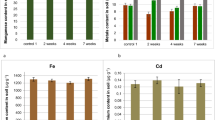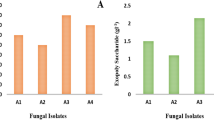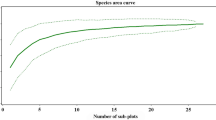Abstract
SURVEYS of heavy metal pollution using bryophytes have produced valuable information about lead levels in the environment. Hypnum cupressiforme Hedw., Hylocomium splendens (Hedw.) B. and S., Pleurozium schreberi (Brid.) Mitt., and Sphagnum magellanicum Brid. have been used to demonstrate regional gradients of lead and other non-ferrous metals in Sweden1–4, and high levels of lead and other metals have been found in Hypnum cupressiforme downwind from the Swansea urban industrial complex5. Centres of large urban areas, where pollution-sensitive pleurocarpous mosses are absent but where high levels of lead might be expected, have not been studied.
This is a preview of subscription content, access via your institution
Access options
Subscribe to this journal
Receive 51 print issues and online access
$199.00 per year
only $3.90 per issue
Buy this article
- Purchase on SpringerLink
- Instant access to full article PDF
Prices may be subject to local taxes which are calculated during checkout
Similar content being viewed by others
References
Rühling, Å., and Tyler, G., Bot. Notiser, 121, 321 (1968).
Rühling, Å., and Tyler, G., Bot. Notiser, 122, 248 (1969).
Rühling, Å., and Tyler, G., Oikos, 21, 92 (1970).
Rühling, Å., and Tyler, G., J. Appl. Ecol., 8, 497 (1971).
Goodman, G. T., and Roberts, T. M., Nature, 231, 287 (1971).
Anon, Nature, 233, 586 (1971).
Antonovics, J., Bradshaw, A. D., and Turner, R. G., Ad. Ecol. Res., 7, 1 (1971).
Author information
Authors and Affiliations
Rights and permissions
About this article
Cite this article
BRIGGS, D. Population Differentiation in Marchantia polymorpha L. in Various Lead Pollution Levels. Nature 238, 166–167 (1972). https://doi.org/10.1038/238166a0
Received:
Revised:
Issue date:
DOI: https://doi.org/10.1038/238166a0



